Guangyuan Liu
Sherman
Context-Aware Semantic Communication for the Wireless Networks
May 29, 2025Abstract:In next-generation wireless networks, supporting real-time applications such as augmented reality, autonomous driving, and immersive Metaverse services demands stringent constraints on bandwidth, latency, and reliability. Existing semantic communication (SemCom) approaches typically rely on static models, overlooking dynamic conditions and contextual cues vital for efficient transmission. To address these challenges, we propose CaSemCom, a context-aware SemCom framework that leverages a Large Language Model (LLM)-based gating mechanism and a Mixture of Experts (MoE) architecture to adaptively select and encode only high-impact semantic features across multiple data modalities. Our multimodal, multi-user case study demonstrates that CaSemCom significantly improves reconstructed image fidelity while reducing bandwidth usage, outperforming single-agent deep reinforcement learning (DRL) methods and traditional baselines in convergence speed, semantic accuracy, and retransmission overhead.
LAMeTA: Intent-Aware Agentic Network Optimization via a Large AI Model-Empowered Two-Stage Approach
May 18, 2025
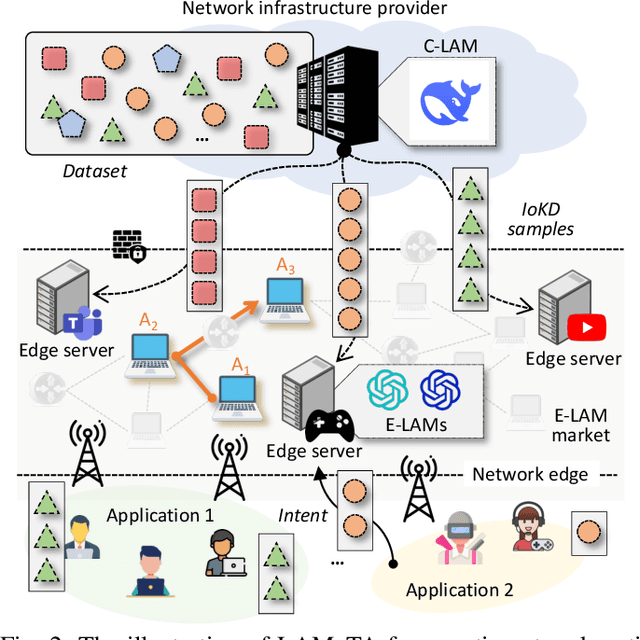


Abstract:Nowadays, Generative AI (GenAI) reshapes numerous domains by enabling machines to create content across modalities. As GenAI evolves into autonomous agents capable of reasoning, collaboration, and interaction, they are increasingly deployed on network infrastructures to serve humans automatically. This emerging paradigm, known as the agentic network, presents new optimization challenges due to the demand to incorporate subjective intents of human users expressed in natural language. Traditional generic Deep Reinforcement Learning (DRL) struggles to capture intent semantics and adjust policies dynamically, thus leading to suboptimality. In this paper, we present LAMeTA, a Large AI Model (LAM)-empowered Two-stage Approach for intent-aware agentic network optimization. First, we propose Intent-oriented Knowledge Distillation (IoKD), which efficiently distills intent-understanding capabilities from resource-intensive LAMs to lightweight edge LAMs (E-LAMs) to serve end users. Second, we develop Symbiotic Reinforcement Learning (SRL), integrating E-LAMs with a policy-based DRL framework. In SRL, E-LAMs translate natural language user intents into structured preference vectors that guide both state representation and reward design. The DRL, in turn, optimizes the generative service function chain composition and E-LAM selection based on real-time network conditions, thus optimizing the subjective Quality-of-Experience (QoE). Extensive experiments conducted in an agentic network with 81 agents demonstrate that IoKD reduces mean squared error in intent prediction by up to 22.5%, while SRL outperforms conventional generic DRL by up to 23.5% in maximizing intent-aware QoE.
Supervised Score-Based Modeling by Gradient Boosting
Nov 02, 2024Abstract:Score-based generative models can effectively learn the distribution of data by estimating the gradient of the distribution. Due to the multi-step denoising characteristic, researchers have recently considered combining score-based generative models with the gradient boosting algorithm, a multi-step supervised learning algorithm, to solve supervised learning tasks. However, existing generative model algorithms are often limited by the stochastic nature of the models and the long inference time, impacting prediction performances. Therefore, we propose a Supervised Score-based Model (SSM), which can be viewed as a gradient boosting algorithm combining score matching. We provide a theoretical analysis of learning and sampling for SSM to balance inference time and prediction accuracy. Via the ablation experiment in selected examples, we demonstrate the outstanding performances of the proposed techniques. Additionally, we compare our model with other probabilistic models, including Natural Gradient Boosting (NGboost), Classification and Regression Diffusion Models (CARD), Diffusion Boosted Trees (DBT), and Bayesian neural network-based models. The experimental results show that our model outperforms existing models in both accuracy and inference time.
Generative AI for Unmanned Vehicle Swarms: Challenges, Applications and Opportunities
Feb 28, 2024



Abstract:With recent advances in artificial intelligence (AI) and robotics, unmanned vehicle swarms have received great attention from both academia and industry due to their potential to provide services that are difficult and dangerous to perform by humans. However, learning and coordinating movements and actions for a large number of unmanned vehicles in complex and dynamic environments introduce significant challenges to conventional AI methods. Generative AI (GAI), with its capabilities in complex data feature extraction, transformation, and enhancement, offers great potential in solving these challenges of unmanned vehicle swarms. For that, this paper aims to provide a comprehensive survey on applications, challenges, and opportunities of GAI in unmanned vehicle swarms. Specifically, we first present an overview of unmanned vehicles and unmanned vehicle swarms as well as their use cases and existing issues. Then, an in-depth background of various GAI techniques together with their capabilities in enhancing unmanned vehicle swarms are provided. After that, we present a comprehensive review on the applications and challenges of GAI in unmanned vehicle swarms with various insights and discussions. Finally, we highlight open issues of GAI in unmanned vehicle swarms and discuss potential research directions.
Mixture of Experts for Network Optimization: A Large Language Model-enabled Approach
Feb 15, 2024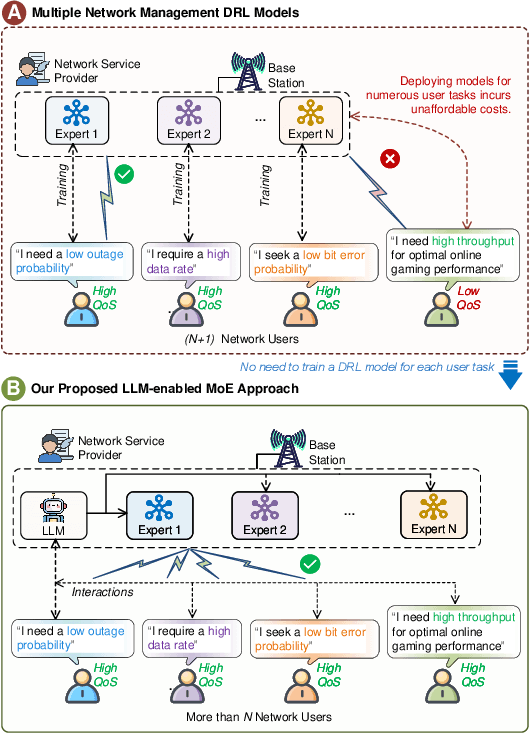
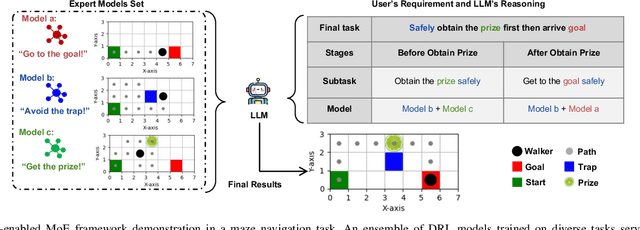
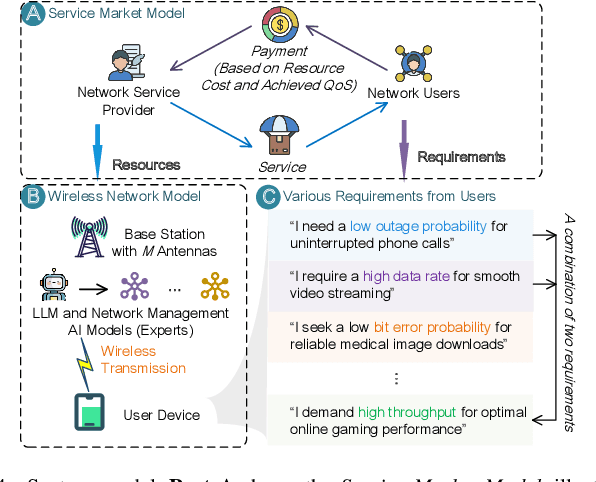
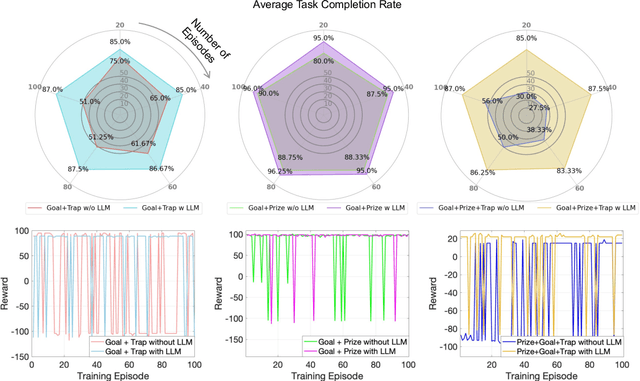
Abstract:Optimizing various wireless user tasks poses a significant challenge for networking systems because of the expanding range of user requirements. Despite advancements in Deep Reinforcement Learning (DRL), the need for customized optimization tasks for individual users complicates developing and applying numerous DRL models, leading to substantial computation resource and energy consumption and can lead to inconsistent outcomes. To address this issue, we propose a novel approach utilizing a Mixture of Experts (MoE) framework, augmented with Large Language Models (LLMs), to analyze user objectives and constraints effectively, select specialized DRL experts, and weigh each decision from the participating experts. Specifically, we develop a gate network to oversee the expert models, allowing a collective of experts to tackle a wide array of new tasks. Furthermore, we innovatively substitute the traditional gate network with an LLM, leveraging its advanced reasoning capabilities to manage expert model selection for joint decisions. Our proposed method reduces the need to train new DRL models for each unique optimization problem, decreasing energy consumption and AI model implementation costs. The LLM-enabled MoE approach is validated through a general maze navigation task and a specific network service provider utility maximization task, demonstrating its effectiveness and practical applicability in optimizing complex networking systems.
Generative AI-aided Joint Training-free Secure Semantic Communications via Multi-modal Prompts
Sep 05, 2023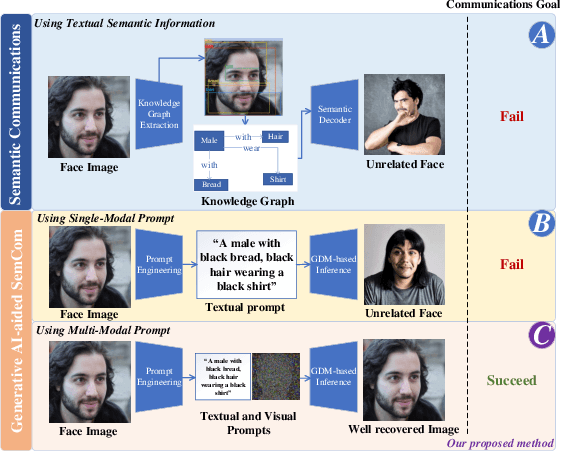
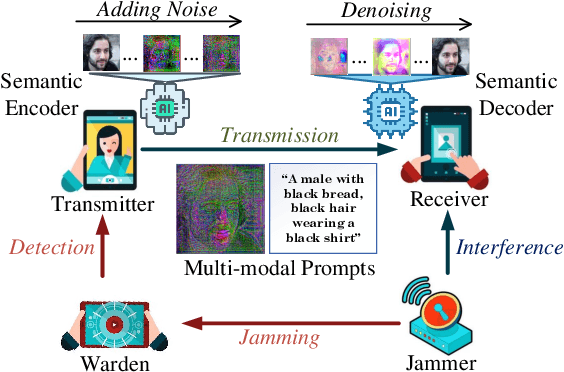
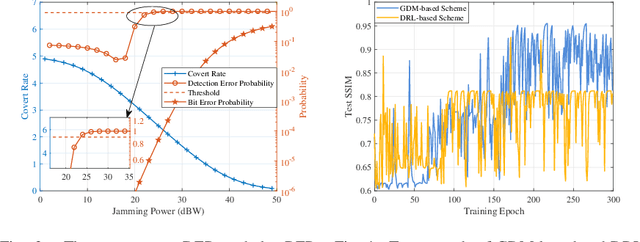
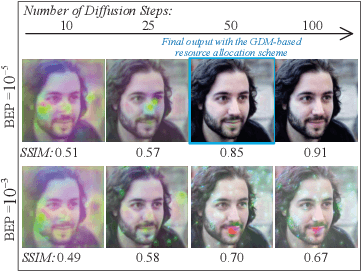
Abstract:Semantic communication (SemCom) holds promise for reducing network resource consumption while achieving the communications goal. However, the computational overheads in jointly training semantic encoders and decoders-and the subsequent deployment in network devices-are overlooked. Recent advances in Generative artificial intelligence (GAI) offer a potential solution. The robust learning abilities of GAI models indicate that semantic decoders can reconstruct source messages using a limited amount of semantic information, e.g., prompts, without joint training with the semantic encoder. A notable challenge, however, is the instability introduced by GAI's diverse generation ability. This instability, evident in outputs like text-generated images, limits the direct application of GAI in scenarios demanding accurate message recovery, such as face image transmission. To solve the above problems, this paper proposes a GAI-aided SemCom system with multi-model prompts for accurate content decoding. Moreover, in response to security concerns, we introduce the application of covert communications aided by a friendly jammer. The system jointly optimizes the diffusion step, jamming, and transmitting power with the aid of the generative diffusion models, enabling successful and secure transmission of the source messages.
Vision-based Semantic Communications for Metaverse Services: A Contest Theoretic Approach
Aug 15, 2023



Abstract:The popularity of Metaverse as an entertainment, social, and work platform has led to a great need for seamless avatar integration in the virtual world. In Metaverse, avatars must be updated and rendered to reflect users' behaviour. Achieving real-time synchronization between the virtual bilocation and the user is complex, placing high demands on the Metaverse Service Provider (MSP)'s rendering resource allocation scheme. To tackle this issue, we propose a semantic communication framework that leverages contest theory to model the interactions between users and MSPs and determine optimal resource allocation for each user. To reduce the consumption of network resources in wireless transmission, we use the semantic communication technique to reduce the amount of data to be transmitted. Under our simulation settings, the encoded semantic data only contains 51 bytes of skeleton coordinates instead of the image size of 8.243 megabytes. Moreover, we implement Deep Q-Network to optimize reward settings for maximum performance and efficient resource allocation. With the optimal reward setting, users are incentivized to select their respective suitable uploading frequency, reducing down-sampling loss due to rendering resource constraints by 66.076\% compared with the traditional average distribution method. The framework provides a novel solution to resource allocation for avatar association in VR environments, ensuring a smooth and immersive experience for all users.
Semantic Communications for Artificial Intelligence Generated Content (AIGC) Toward Effective Content Creation
Aug 09, 2023



Abstract:Artificial Intelligence Generated Content (AIGC) Services have significant potential in digital content creation. The distinctive abilities of AIGC, such as content generation based on minimal input, hold huge potential, especially when integrating with semantic communication (SemCom). In this paper, a novel comprehensive conceptual model for the integration of AIGC and SemCom is developed. Particularly, a content generation level is introduced on top of the semantic level that provides a clear outline of how AIGC and SemCom interact with each other to produce meaningful and effective content. Moreover, a novel framework that employs AIGC technology is proposed as an encoder and decoder for semantic information, considering the joint optimization of semantic extraction and evaluation metrics tailored to AIGC services. The framework can adapt to different types of content generated, the required quality, and the semantic information utilized. By employing a Deep Q Network (DQN), a case study is presented that provides useful insights into the feasibility of the optimization problem and its convergence characteristics.
 Add to Chrome
Add to Chrome Add to Firefox
Add to Firefox Add to Edge
Add to Edge